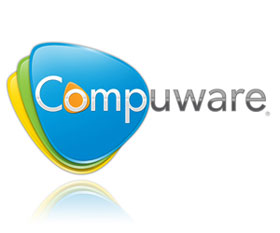Governance and innovation – mind the gaps
It’s widely accepted that embracing IT service management (ITSM) good practice frameworks such as the Information Technology Infrastructure Library (ITIL) enables organisations to standardise their service management processes and use a common language when talking both internally and with IT service providers and technology vendors.
ITIL gives detailed descriptions of a number of important IT practices and provides comprehensive checklists, tasks, and procedures that IT organisations can tailor to their own needs. This improves efficiencies, trims costs and avoids most contractual misunderstandings – except for two crucial areas of technology management: governance and innovation.
Owning the outcome
ITSM as defined by ITIL provides little guidance as to governance. Today, a typical outsourcing environment may include multiple conventional outsourcers, any number of cloud providers, and, possibly, some insourcing. Keeping all parties moving in the same direction and interoperating effectively therefore calls for strong governance.
Effective governance means ensuring that shared objectives are clearly articulated and owned not only by the organisation but also by all its partners. Doing so compels organisations to link top level objectives relating to ITSM in the outsourcing environment back to the outcomes defined in the contract itself. Then they need to translate these objectives into specific goals and outcomes for each of the various partners in the contract.
This is the area of ITSM that receives the least attention, yet it affects your success in fundamental ways, because ITSM is delivered less by technology than by people. The biggest gaps between intention and execution occur when the roles and responsibilities of transition from on-premise to the service provider are not well defined or understood down to the most granular level.
Control Objectives for Information and related Technology (COBIT) is an effective tool for realising stronger governance. COBIT is a supporting toolset that allows managers to bridge the gap between control requirements, technical issues, and business risks.
Ultimately, combining COBIT and ITIL is the most effective way to plug the governance gap – because they provide a common taxonomy and best practices – not only to define roles and responsibilities, but also to match them to individuals in both the client organisation and the service provider.
Standardising innovation
A number of industry frameworks can be used to standardise governance. In fact, almost by definition, governance can only succeed if it’s based on standardisation of processes.
By contrast, innovation of any kind breaks free of standards to establish fresh ways of thinking about approaching and doing things. No surprises, then that framework such as ITIL and ISO27000 don’t provide guidance on innovation.
Of the three reasons for outsourcing – cost improvement, operational improvement, and business process improvement / transformation − ITIL does a good job in addressing the first two, but not the last.
Service providers and clients need to create their own model capable of ensuring that the relationship continually brings forward new ideas and business cases. In other words, every outsourcing agreement needs to include an innovation framework focused on evolving the managed environment.
In putting such an innovation framework together, it’s important that all parties understand what is meant by innovation.
Many people use the word innovation to indicate ‘blue sky’ thinking and a time frame of three years or more. A more practical way of thinking about innovation is to ask what it means for your particular business, the business strategy you’ve embarked on, and where on the innovation curve you are right now. Innovation can mean anything from reducing overall expenditure by 5% year-on-year, to changing a business model to capture new markets.
Innovation for organisation ‘A’ is never going to be the same as for organisation ‘B’. Nor would it necessarily be the same for a given organisation over time.”
Whatever the motivation for organisations to innovate, what they’re looking for from their outsourcing partners is insight into technology roadmaps and the ability to apply that knowledge to the organisation’s business in the most relevant way.
To ensure relevance, service providers need also to understand their clients’ businesses
The difference between transition – moving the client’s environment to the outsourcer – and transformation (innovation) is that transition provides the client with a like-for-like service without enhancements to current capabilities. Transformation, on the other hand, moves the client from a current to a future state, introducing new capabilities to the IT infrastructure.
To do the latter effectively, the provider must know what the client’s business strategy is. The best way to get that understanding is through a due diligence process before the contract is signed. And, the best way to conduct the due diligence is by using an ITSM assessment.
It’s aligned to ITIL good practice and it gives both parties a snapshot of the current maturity of the service arrangements. Therefore, everyone knows where the innovation journey will start and can adjust their expectations of what the end game of innovation or transformation will look like.
ITSM assessments should be repeated on a regular basis thereafter to, firstly, provide a measure of the progress of the transformation and, secondly, indicate whether or not the transformation process needs to be updated or refined.
Bridging the divide
For businesses grappling to navigate the growing complexity associated with an increasingly heterogeneous service provider mix, proper planning, coupled with a ‘common language’ – offered by ITSM good practice processes, procedures and assessments – can form a robust foundation for success.
Be mindful of the gaps however, as ITSM is delivered less by technology than by people. Governance and innovation therefore need complementary yet highly focused attention.
By Brent Flint, Services Executive, MEA Brand Services, Dimension Data


